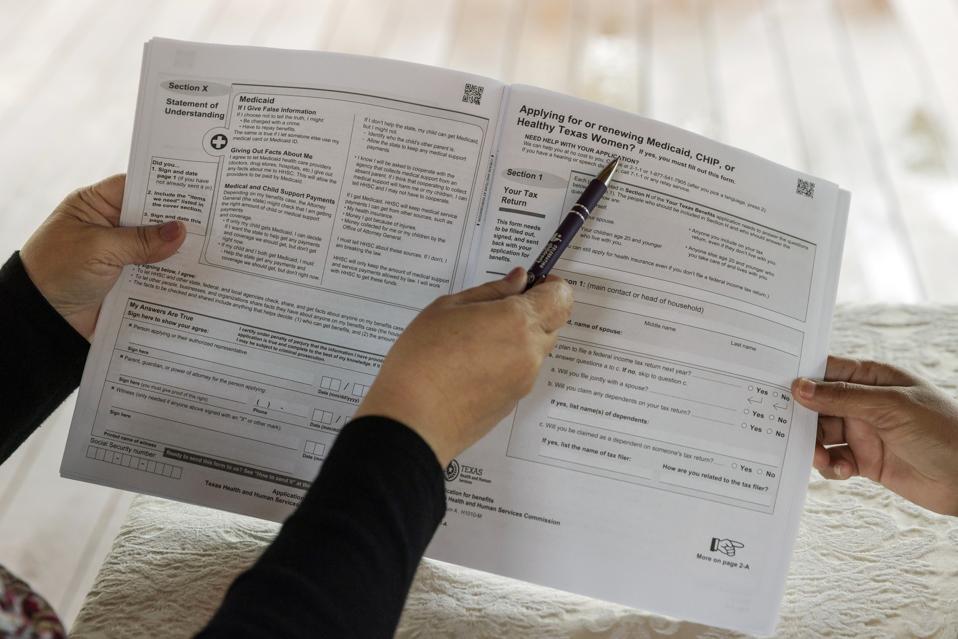Strides have been made towards reducing the numbers of people without health insurance in the U.S. In August 2023 the Department of Health and Human Services announced that the national uninsured rate reached an all-time low of 7.7% during the first quarter of the year. The number of uninsured declined from 31.6 million to 25.3 million over the 2020–23 period.
Importantly, the largest drops in numbers of uninsured took place among lesser well off individuals whose household income was either below 100% or between 200% and 400% of the federal poverty level. But it’s millions of these folks, who have been disenrolled from Medicaid since the Covid-19 pandemic public health emergency ended in April of last year, who now find themselves uninsured. This harks back to the persistent issue of tens of millions of Americans lacking health insurance on any given day.
STAT News reported KFF data that roughly 21% of the people who were enrolled prior to the redeterminations, or almost 20 million, lost coverage at least temporarily. Meanwhile, 45%, or 42 million, were confirmed as Medicaid-eligible. However, for the remaining 31 million people, renewal of coverage is pending. Moreover, data show that approximately five of the more than 20 million who have been disenrolled during the post-pandemic eligibility reviews are still uninsured.
During the public health emergency caused by the Covid-19 pandemic, Medicaid’s annual (re)determinations of enrollee eligibility were paused as part of a continuous coverage provision included in the 2020 Families First Coronavirus Response Act. Through March of 2023, enrollment in Medicaid and the Children’s Health Insurance Program grew by more than 23 million people.
However, since last April Medicaid restarted the determination process to check to see if enrollees are still eligible. As a result, millions are no longer enrolled in Medicaid and have no other coverage. This has often been due to procedural and administrative reasons, meaning individuals did not complete the necessary paperwork, in part because former enrollees did not properly understand the process and specifically what was needed for them to retain coverage.
The impact on individuals varies enormously by state. For example, Utah disenrolled the highest percentage (60%) of its completed Medicaid redeterminations while Maine disenrolled the lowest (12%).
Disenrollment numbers have surpassed initial expectations set by the federal government. Last year the Biden Administration projected that 15 million in total would be removed from the rolls.
What’s concerning is that about 40% of the eligibility redetermination process remains to be completed, which implies there’s still a lot more disenrolling ahead which will result in more people added to the uninsured tally.
Many people who are no longer eligible for Medicaid can sign on to their employer’s health plan, should that be offered to them. Further, for some who must obtain their own health insurance, state marketplace exchange coverage is available. To illustrate, through November 2023, nearly 2.3 million people had transitioned from Medicaid to a private marketplace plan. This service is available in every state to help individuals, families and small businesses shop for and register with an affordable medical insurance plan. Some states have their own marketplace platforms. Other states use the federally run platforms. Created by the Affordable Care Act, these portals gives people access to health insurance plans of all types from a variety of insurers.
As the independent health insurance guide healthinsurance.org explains, in the majority of states people can sign up with a state marketplace plan at any time before July 31, 2024, as part of an extended “unwinding special enrollment period.” Also, individuals who no longer qualify for Medicaid based on their level of income may still be able to obtain subsidies to help offset the cost of their health insurance premiums.
Nevertheless, as Medicaid unwinding continues hundreds of thousands and perhaps millions more people will become uninsured. This calls to mind the longstanding discussion of both lack of health insurance for several tens of millions in America and the tenuous nature of medical coverage for many others.

